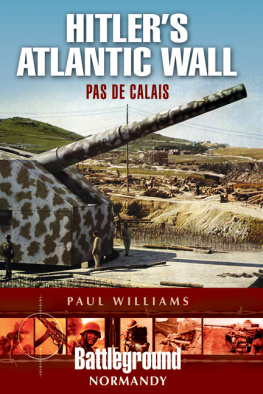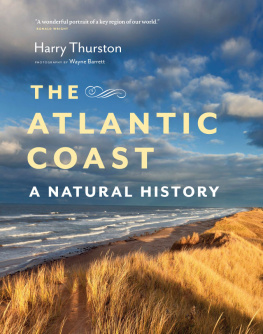Fortress 63
THE ATLANTIC WALL (1)
France

Steven J Zaloga Illustrated by H Johnson, L Ray & C Taylor
Series editors Marcus Cowper and Nikolai Bogdanovic
The Atlantic Wall was the largest fortification effort in recent European history, rivaled only by Frances Maginot Line. The portions in France consumed over 17,000,000m3 of concrete, 1,200,000 tonnes of steel and cost some 3.7 billion Deutschmarks. To put this in some perspective, the steel consumption was about five percent of German annual production and roughly equivalent to the amount used in annual German tank production.
If the Atlantic Wall had been carefully designed and skillfully integrated into Germanys strategic planning, it might have been worth its considerable cost. But it was created on Hitlers whim, built in haste with little coordinated planning, and fitted uncomfortably with the Wehrmachts tactical doctrine. Hitler ordered its construction in response to British raiding along the English Channel and as a barrier to an anticipated Allied invasion. Wehrmacht commanders had little influence on this scheme, and a debate raged until D-Day over the best way to resist the inevitable Allied amphibious assault. The overstretched German war economy was unable to match Hitlers dream of Fortress Europe, and the Atlantic Wall was never fully completed. The Wehrmacht commander in France, Generalfeld-marschall Gerd von Rundstedt, later derided the Atlantic Wall as an enormous propaganda bluff.
On D-Day, the Atlantic Wall was strongest where the Germans expected the Allied invasion, the Iron Coast of the Pas-de-Calais opposite Britain. The Allies wisely chose to avoid this heavily defended area and struck instead where the Atlantic Wall was weaker in lower Normandy. The D-Day assault overcame the Atlantic Wall in less than a day. Other stretches of the Atlantic Wall, especially near the Channel ports, were involved in later fighting but proved no more effective.

The ultimate role of the Atlantic Wall was to stop the Allied amphibious invasion: a mission that failed. This is a view from the H677 88mm PaK 43/41 gun casemate of strongpoint WN29 on Juno Beach near Courselles-sur-Mer on D-Day looking out on landing craft of the 3rd Canadian Infantry Division. (NAC PA-128792 Donald Grant)
Coastal defense had been assigned to the Kriegsmarine (navy) since the reforms of Kaiser Wilhelm in the late 1880s. This mission focused on the defense of Germanys ports along the North Sea and Baltic coasts. By the time of World War I, German naval doctrine saw coastal defense as a series of layers beginning with warships and submarines at sea as the initial barrier, followed by coastal forces such as torpedo boats and small submarines as the inner layer, and finally fixed defenses such as minefields and shore batteries as the final defensive layer. Fortification played a minor role in this doctrine. During World War I, this doctrine was found inadequate when Germany occupied Belgium. The Kriegsmarine did not have the manpower or resources to create an adequate defense along the coast of Flanders, and the dominance of the Royal Navy in the English Channel undermined the traditional tactics since German warships stood little chance of challenging the British on a day-to-day basis. The Kriegsmarine was obliged to turn to the army to assist in this mission, particularly in the creation of gun batteries along the coast to discourage British raiding or possible amphibious attack. These gun batteries were employed in elementary Kesselbettungen (kettle positions) so named for the pan-like shape of the fortification. The Kreigsmarine began to pay more attention to needs of fortification in the late 1930s after Germanys re-militarization under Hitlers new Nazi government. One of the first major coastal fortification efforts took place on the islands in the Helgoland Bay, along the North Sea coast.
At the start of World War II, the Kriegsmarine retained the traditional coastal defense mission. There was no dedicated coastal defense force, but rather the mission was simply one of those assigned to the regional naval commands. The North Sea coast was defended with a scattering of coastal batteries and newly installed naval flak units, but there was little modern fortification construction prior to 1939. Following the defeat of France in the summer of 1940, the Wehrmacht began preparations for an amphibious assault on Britain, Operation Seelwe (Sealion). On July 16, 1940, Hitler issued Fhrer Directive No. 16, which called for the creation of fortified coastal batteries on the Pas-de-Calais to command the Straits of Dover and to protect the forward staging areas of the German invasion fleet.
Since it would take time to erect major gun batteries, the first heavy artillery in place were army railroad guns that began arriving in August 1940. To provide these with a measure of protection against British air attack, several cathedral bunkers (Dombunker) were created near the coast at Calais, Valle Heureuse, Marquise and Wimereux. At the time, the army had nine railroad artillery regiments with a total of 16 batteries and the Kriegsmarine had a pair of 150mm railroad guns known as Batterie Gneisenau. The army created a coastal artillery command to manage this new mission and the army artillery along the English Channel was put under the command of Army Artillery Command 104. There was some dispute between the army and Kriegsmarine over the direction of the coastal artillery, with an eventual compromise being reached that the navy would direct fire against naval targets while the army would direct fire against land targets and take over control once the invasion of Britain began.
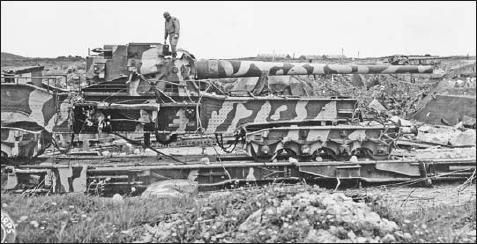
The army preferred heavy railroad guns over massive fixed guns for long-range firepower. This is a Krupp 203mm K(E) of battery EB.685 stationed near Auderville-Laye in the Cherbourg sector shortly after its capture in June 1944. (NARA)

The heights of Mont de Coupole, located to the southeast of Wissant, provided an ideal observation point between Cap Gris-Nez and Cap Blanc-Nez for the heavy artillery batteries nearby. As a result, the hilltop is dotted with observation bunkers like this one. (Authors collection)
German Army railroad artillery batteries in France
| Battery | Sector | Weapons |
|---|
| EB.688 | Coquelles | 2 280mm |
| EB.696 | Saint-Pol | 2 280mm |
| EB.710 | Nieulay | 2 280mm |
| EB.765 | Frethun | 2 280mm |
| EB.701 | Hydrequent | 1 210mm |
| EB.712 | Pointe aux Oies | 2 280mm |
| EB.713 | Hydrequent | 3 280mm |
| EB.655 | Montreuil | 4 150mm |
| EB.532 | Paimpol | 2 203mm |
| EB.721 | Le Verdon | 2 280mm |
| EB.664 | Guethary | 2 240mm |
| EB.674 | Mondeguy | 3 240mm |
Following the arrival of the railroad guns, both the army and Kriegsmarine began to move other types of heavy artillery to the Pas-de-Calais. The Kriegsmarine obtained some of these by stripping existing coastal fortifications, while the army obtained some weapons from the Westwall border fortifications or from field army heavy artillery regiments. Four powerful batteries were constructed, starting in 1941, which had the range to actually reach Britain near Dover and Folkestone. These included the Lindemann, Todt, Friedrich August and Grosser Kurfrst batteries. The artillery concentration in the Pas-de-Calais pre-dated the Atlantic Wall and was in reality an offensive deployment intended to support the invasion, and not a defensive fortified position. Even though not a true part of the Atlantic Wall, these batteries would come to symbolize Fortress Europe due to their frequent appearance in propaganda films.

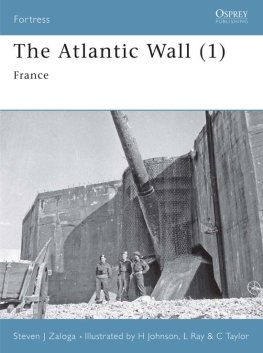

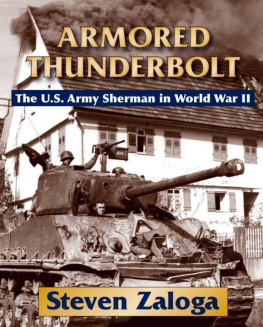


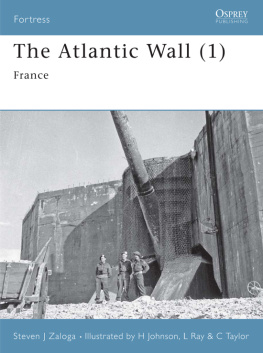
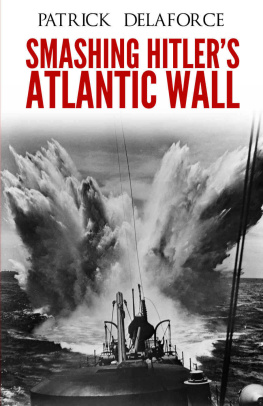


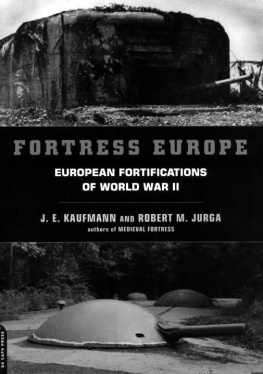
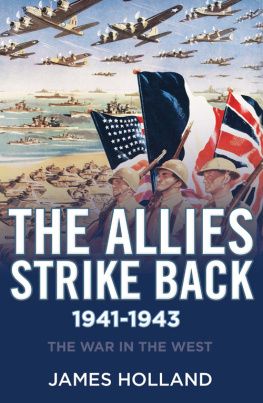
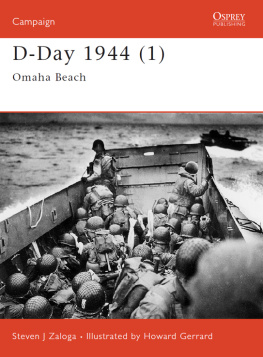
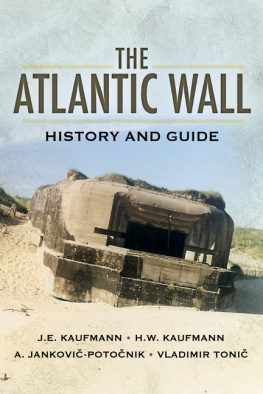
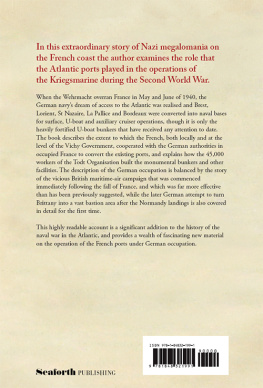
![Russell - Leaping The Atlantic Wall - Army Air Forces Campaigns In Western Europe, 1942-1945 [Illustrated Edition]](/uploads/posts/book/94591/thumbs/russell-leaping-the-atlantic-wall-army-air.jpg)
